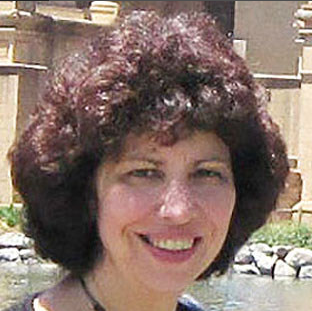This month, LISC and Cornell University will co-sponsor a conference on comprehensive approaches to turning vacant and “zombie” homes into community assets—and upending the conditions that create them in the first place. Helene Caloir, director of LISC’s $75 million New York State Housing Stabilization Fund, describes how this work is part and parcel of the broad challenges of revitalizing neighborhoods, dismantling racial inequity and sparking economic mobility.
Zombies have invaded our country’s collective imagination, via TV and movies, video games and novels—even academic research. As a result, we’ve learned a thing or two about them. For one, zombies wreak havoc on communities, spreading a virus of decay and demoralization through once-robust populations. They are eyesores, insidious, and hard to get rid of.
Zombie homes—as vacant houses caught in foreclosure limbo are known—share many of those same characteristics. Abandoned and left to decay, they have a morbid effect on a neighborhood, often becoming crime hotspots and dragging down property values and people’s pride in the surrounding neighborhood. The difficulty of untangling their complex lien histories helps them evade capture, and the pernicious factors that went into turning them into zombies in the first place can be hard to pin down and remedy.
But the similarities end there. Because zombie homes can be routed and, in many cases, brought back to a healthy new life. The strategies for getting there are the subject of an upcoming conference sponsored by LISC and Cornell University’s Community and Regional Development Institute, along with Cornell’s Rust2Green and Engaged Cornell programs. The meeting, “From Zombies and Vacants to Sustainable Housing: Building Resilient Communities,” will gather community practitioners, policy advocates and academics at Cornell’s campus to discuss the work of remediating, repurposing and preventing the phenomenon of vacant housing. Those discussions, in turn, will serve as a launch pad to broaching the broader questions of how to reduce economic distress and energize communities.

This LISC-Cornell collaboration first emerged from our ongoing New York State Housing Stabilization Fund. The Fund was created in 2015, fueled with money from several settlements between the New York State Attorney General’s office and banks in the wake of the mortgage foreclosure crisis. LISC was selected to oversee $75 million in grants and offer technical assistance to dozens of municipalities, local land banks and affordable housing developers. Cornell, for its part, has committed to supporting affordable housing and community development projects and has joined forces with several of our grantees, to help tackle the zombies in their midst.
Sessions at the conference will cover the gamut of issues related to zombie and vacant homes, which number in the tens of thousands in New York State: community health and wellness, the impact of housing vacancy on safety and crime, and the roles of climate change and resiliency, for starters. Mehrsa Baradaran, author of The Color of Money: Black Banks and the Racial Wealth Gap and Cornell political scientist Jamila Michener will explore how the legacies of structural racism, housing segregation and discriminatory credit policies set economic and social traps for communities of color and perpetuate the scourge of vacants and zombies today.

All of these areas are at the heart of LISC’s approach to empowering communities and connecting people to opportunities that will support their economic mobility and wellbeing. The good news is that the Housing Stabilization Fund is helping local places make concrete change on these fronts—and teaching us what works.
We’ve learned, for instance, that a little money can go a long way in under-resourced municipalities looking to remediate zombies and vacants, revitalize neighborhoods and help prevent foreclosure. And those municipalities are sharing ideas and best practices through new networks arrising out of their work.
We’ve learned, too, that when municipal governments and land banks have access to specialized technology to collect and analyze housing data, it vastly improves their ability to make strategic use of limited resources. And when residents are engaged to identify and address their neighborhoods’ biggest challenges, that process is far more successful.
We’ve also seen that, just as zombies and vacants create a downward spiral in a community, there’s an upward spiral when those homes are renovated, inhabited and returned to the tax rolls. Or even when they’re demolished to make way for greenspace or new homes. I saw this, for example, when the Steuben County Land Bank took down several badly deteriorated houses in Corning, NY. Once the rotting structures and the dangers they posed to the neighborhood were removed, people began painting, gardening and organizing street clean-ups. The psychological weight of the vacants was lifted—and transformed into action.
We will examine these lessons from the field and many more at next week’s conference, and will in turn share our takeaways within and beyond the LISC family. After all, New York isn’t the only state with a zombie problem. The antidote, we’re learning together with partners like Cornell, lies in using our practical and policy know-how to prevent new zombies and vacants from getting a foothold, repurposing the ones we have, and accessing our collective toolbox to help bring our hard hit communities back to life.
Related
- Symposium seeks to beat back ‘zombies,’ grow sustainable housing from Cornell Chronicle
 Helene Caloir, Director of LISC’s New York State Housing Stabilization Fund
Helene Caloir, Director of LISC’s New York State Housing Stabilization Fund
Helene Caloir is Director of the New York State Housing Stabilization Fund, LISC’s program for administering bank settlements with the US Dept of Justice and the New York Attorney General. In this position for three years, she and her team have made and stewarded over 120 grants to cities, towns and villages, land banks and nonprofits, for housing initiatives in New York State. She previously served at LISC as Policy Director for LISC New York City, as Chief Legal Officer for LISC NYC/New York Equity Fund, and as Associate General Counsel and in other positions in the Legal Department.
@LISC_Helene